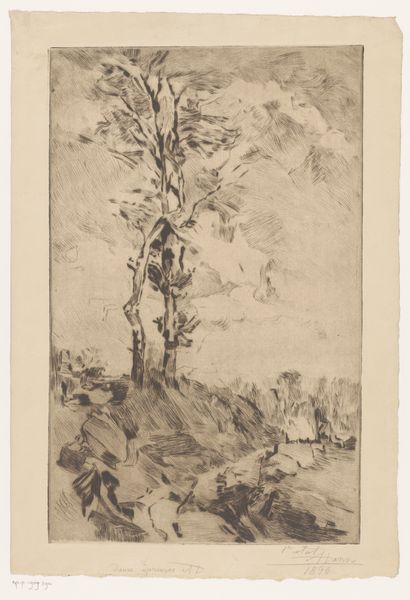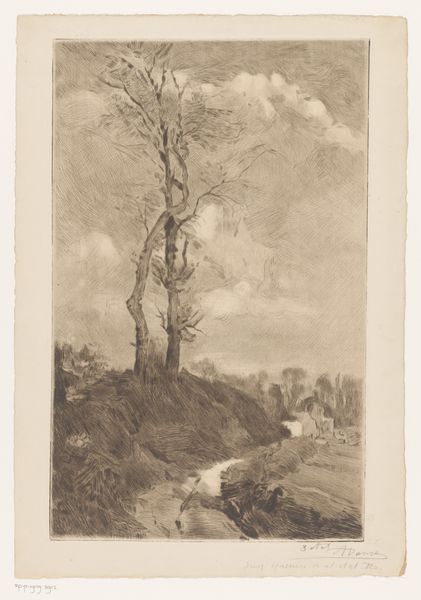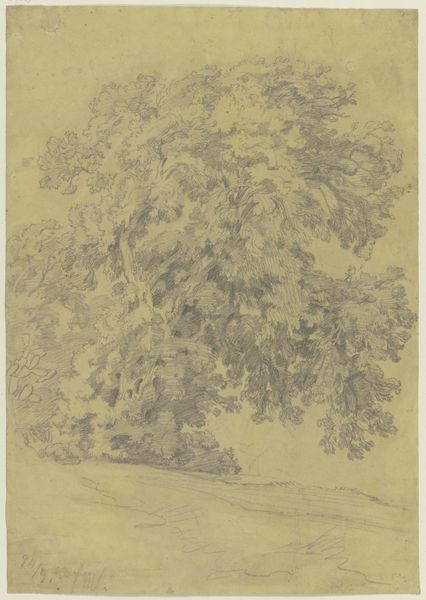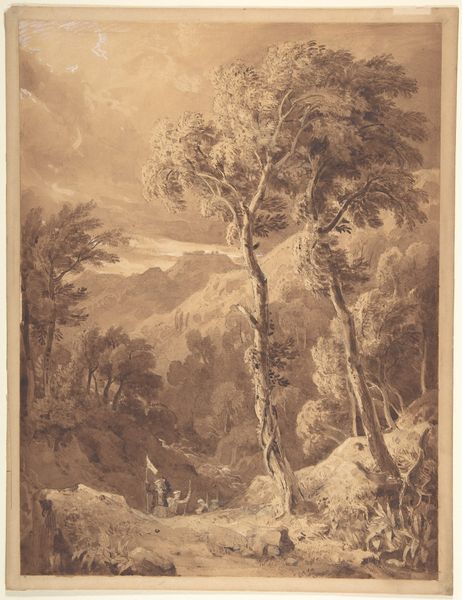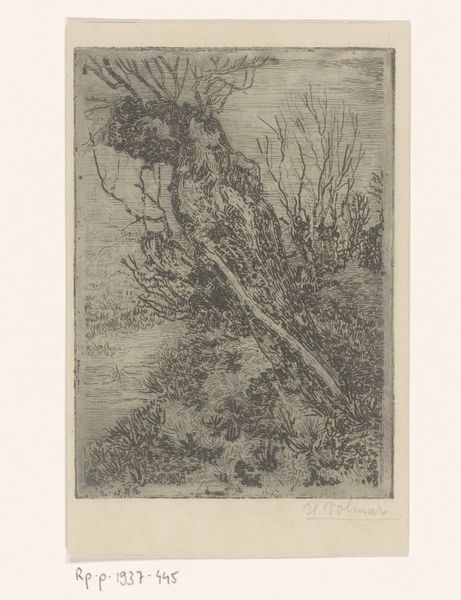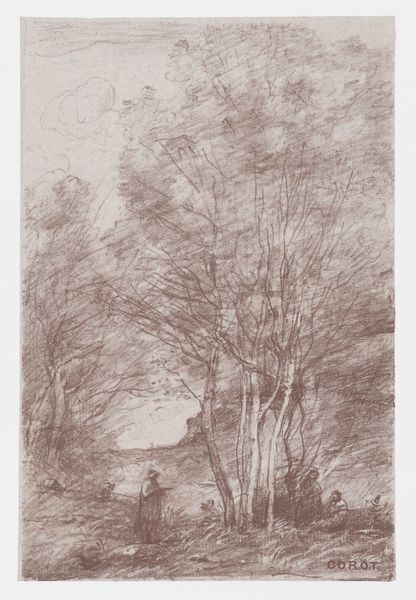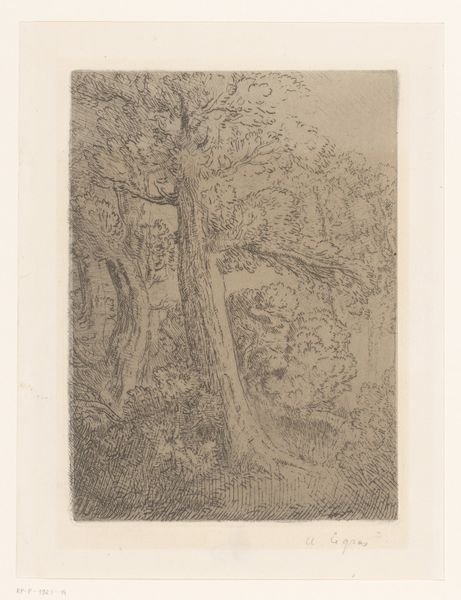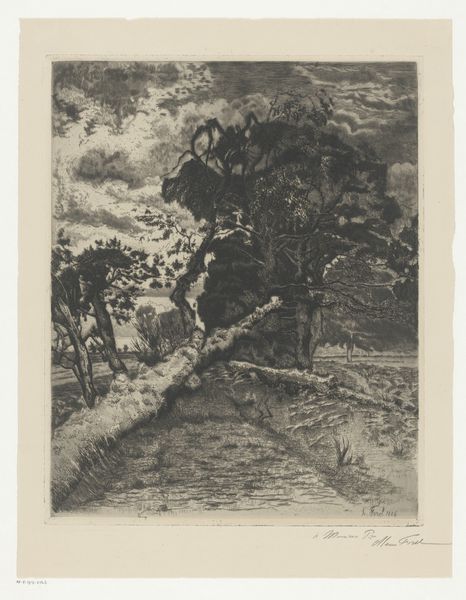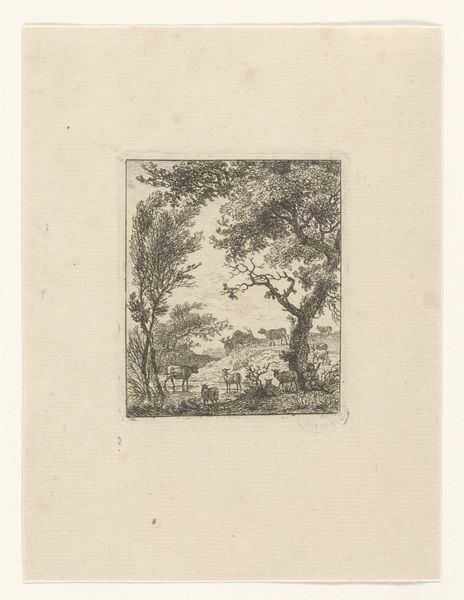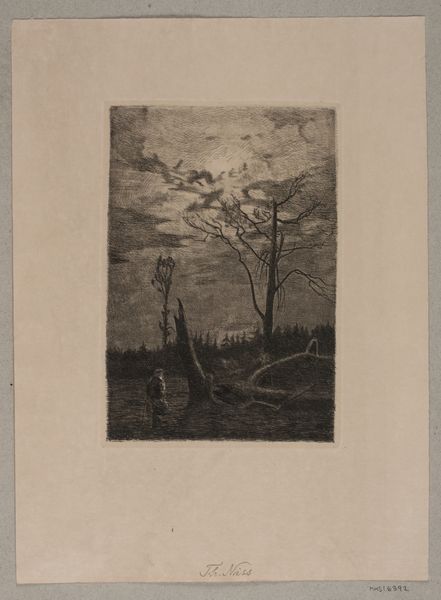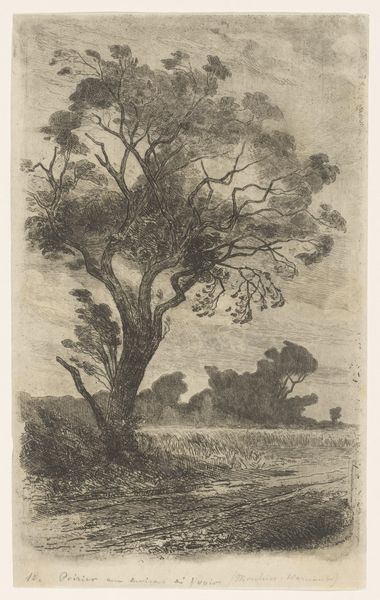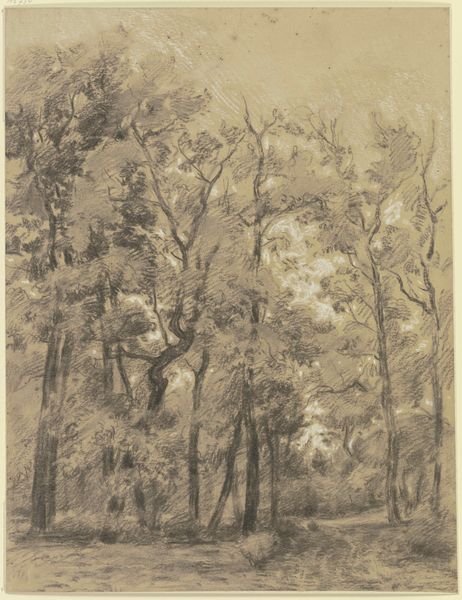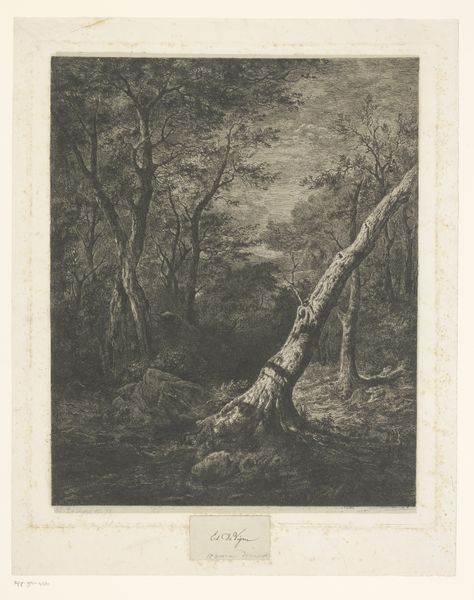
Dimensions: height 435 mm, width 272 mm
Copyright: Rijks Museum: Open Domain
Curator: Let’s explore Auguste Danse’s “Winterlandschap met twee kale bomen,” a landscape drawing created around 1896, now housed in the Rijksmuseum. It’s rendered in ink on paper. What's your initial read of the work? Editor: It's stark. The skeletal trees clawing at a stormy sky immediately evoke a sense of desolation. The limited palette focuses attention on texture—the rough, almost chaotic strokes conveying a feeling of harsh winter. Curator: That sparseness definitely aligns with the broader cultural mood of the late 19th century, a time grappling with rapid industrialization and existential questioning. Landscape art often mirrored these anxieties, presenting nature as indifferent or even hostile. Editor: I see that. The composition certainly emphasizes this. The tall trees dominate, their height is enhanced by the work's vertical format. Notice the perspective, which is nearly flat, creating an immediacy with the bleak scene and drawing us right in with no means to escape. Curator: Exactly. And consider the location within the Rijksmuseum itself. By placing this in dialogue with other Dutch masters, the museum elevates a seemingly simple landscape to a commentary on national identity and the human relationship with the land. Editor: Yet, the loose Impressionistic style feels very modern. It contrasts sharply with the more idealized depictions of nature common in earlier landscape painting, though is more akin to that by, say, van Gogh in his final years. There’s almost a sense of deconstruction. What would Danse's aims be? Curator: It is not merely to transcribe, it’s to evoke—to convey the psychological weight of winter, its impact on both the physical world and human consciousness. Also, Impressionism, with its focus on the fleeting moment, aligns with a growing emphasis on individual experience. And do notice the clear Japanese Ukiyo-e elements here in the layout... Editor: True. The Japanese woodblock prints certainly have formal parallels in perspective, framing, and that flattened plane you mentioned, with that high placement of horizon as the dominant trait! This provides the sense of an unending terrain, pushing one towards emptiness. Curator: It offers such interesting commentary in its seemingly minimalist design. Editor: Yes, it leaves us with a lingering unease – but I appreciate it for its raw honesty.
Comments
No comments
Be the first to comment and join the conversation on the ultimate creative platform.
